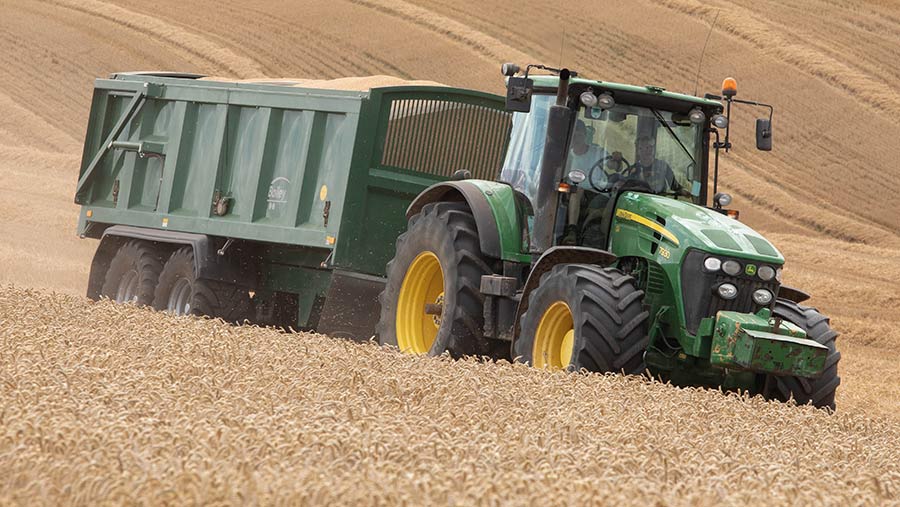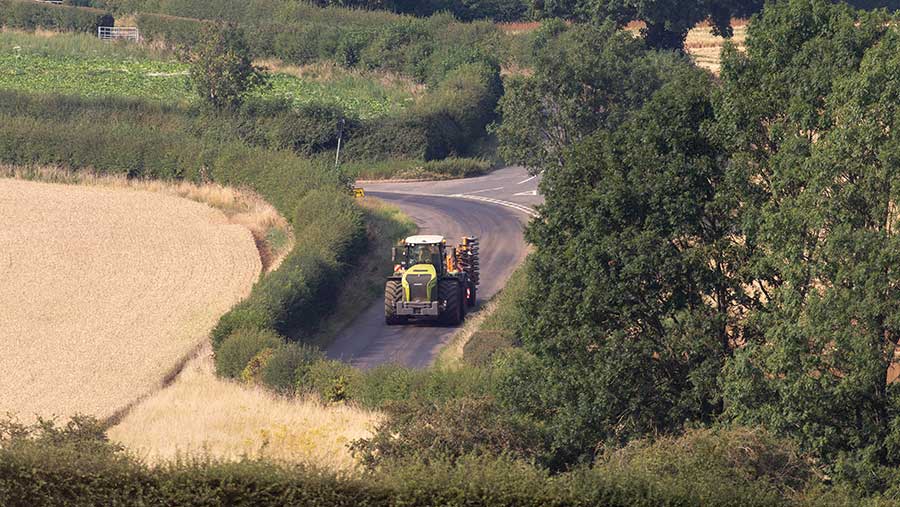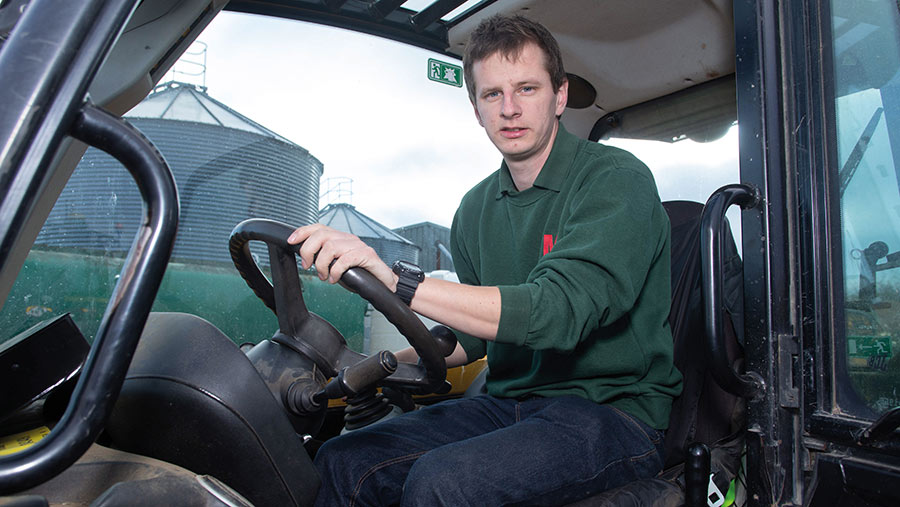Focus on farm safety protocols as harvest season nears
 © Tim Scrivener
© Tim Scrivener With fieldwork in full swing and harvest fast approaching, farmers are being urged to revisit their farm safety protocols, to make sure last year’s upturn in accidents and fatalities is put into reverse.
The inherent dangers of farmwork, in general, and at harvest time, in particular, were the focus of a recent pre-harvest safety webinar run by the Farm Safety Partnership.
See also: Farmers advised to fit combine fire-suppression kit before harvest
With 41 deaths on farms last year and with the farm fatality rate some 20 times higher than the national average, Health and Safety Executive (HSE) agriculture inspector Eve Macready Jones said farmers needed to pay close attention to transport and machinery – which were in the top three causes of death.
“Last year there were six deaths just from machinery-related incidents,” she said. “There was one with a pto shaft; the others included incidents with excavator buckets, trailers and various tractor attachments.
“Most of these incidents happened through issues with maintenance, making adjustments without isolating [the power], and unblocking different parts of machinery – so preventable, I would say.”

© Tim Scrivener
Transport dangers
While farmers had made improvements with pto guards in recent years, transport remained a killer, with 13 deaths in 2020-21. The main causes were overturning and people being run over by farm vehicles.
“The key thing here is the failure to follow Safe Stop,” said Ms Macready Jones. “It’s quite simplistic and we want you to consider what is reasonable.”
For opening a gate, the HSE would not expect you to follow every step of Safe Stop. But for more involved things, such as making an adjustment, changing some kit, or clearing a blockage, it is critical to employ Safe Stop to avoid fatalities.
Safe Stop
- Handbrake
- Neutral
- Power off
- Remove key
Overhead powerlines
Another key concern at harvest time is contact with overhead powerlines (OHPLs) – especially given the trend for farm machinery to get bigger and, consequently, higher.
While there were only four fatalities due to electrocution from 2016 to 2021, there were more than 300 reported “contacts” in 2021, each of which represented a life-threatening event.
To encourage better awareness, the HSE will be visiting farms that have previously had contacts ahead of harvest 2022, to see what measures they are now taking.
As well as advice from the Energy Networks Association, with its “Look out, Look up!” campaign, the HSE had similar guidance, including:
- Know where OHPLs are located on your land
- Avoid working near them, where possible
- Obtain or prepare a map showing the OHPLs
- Make sure visiting workers/contractors are aware of danger points
- Plan and use safe systems of work under OHPLs
- Seek advice from the distribution network operator.
“If you do touch an overhead line, we would say remain in the cab, unless you can drive clear,” advised Ms Macready Jones. “You should then dial that 105 number, which gets you through to the network operator, who will take steps to either de-energise the line or send people to help you.”
Don’t let anyone else approach, she added, and if you really have to evacuate, then jump clear with leaping strides.
Working with contractors
Thorough communication about farm safety protocols is essential when engaging the services of contractors, National Association of Agricultural Contractors vice-chairman Matt Redman told the webinar.
Before a job even starts, it is crucial to specify who is responsible for what in terms of risk management.
The farmer then needs to provide the contractor with clear and detailed instructions of where and what they are supposed to be doing, well in advance, including the provision of a clear map.

Matt Redman © Tim Scrivener
“You’d be surprised how many maps are just drawn in the dust or on an envelope, and look nothing like the farm,” said Mr Redman.
The map should include key safety information, such as overhead powerlines, underground cables, public footpaths, areas of sloping ground, bridge strengths and the location of livestock.
Contractors will also need to know the location of first aid facilities on the farm, and any firefighting equipment, as well as all contact details and procedures in an emergency.
“You’ve got to make things clear for somebody coming on to the farm for the first time,” said Mr Redman.
Advice for rural road users
As traffic builds on rural roads in summer, increasing the risk of accidents, rural insurer NFU Mutual has issued the following advice to farmers:
- Ensure all equipment is roadworthy, especially brakes and indicators on tractors and trailers
- Be aware of hidden junctions and cycling routes and make contractors aware too
- Familiarise yourself with speed limits for vehicles
- Clean up any mud left on the road
- Indicate early when turning and check for road users on your near side
- Pull over where safe to let traffic pass.
